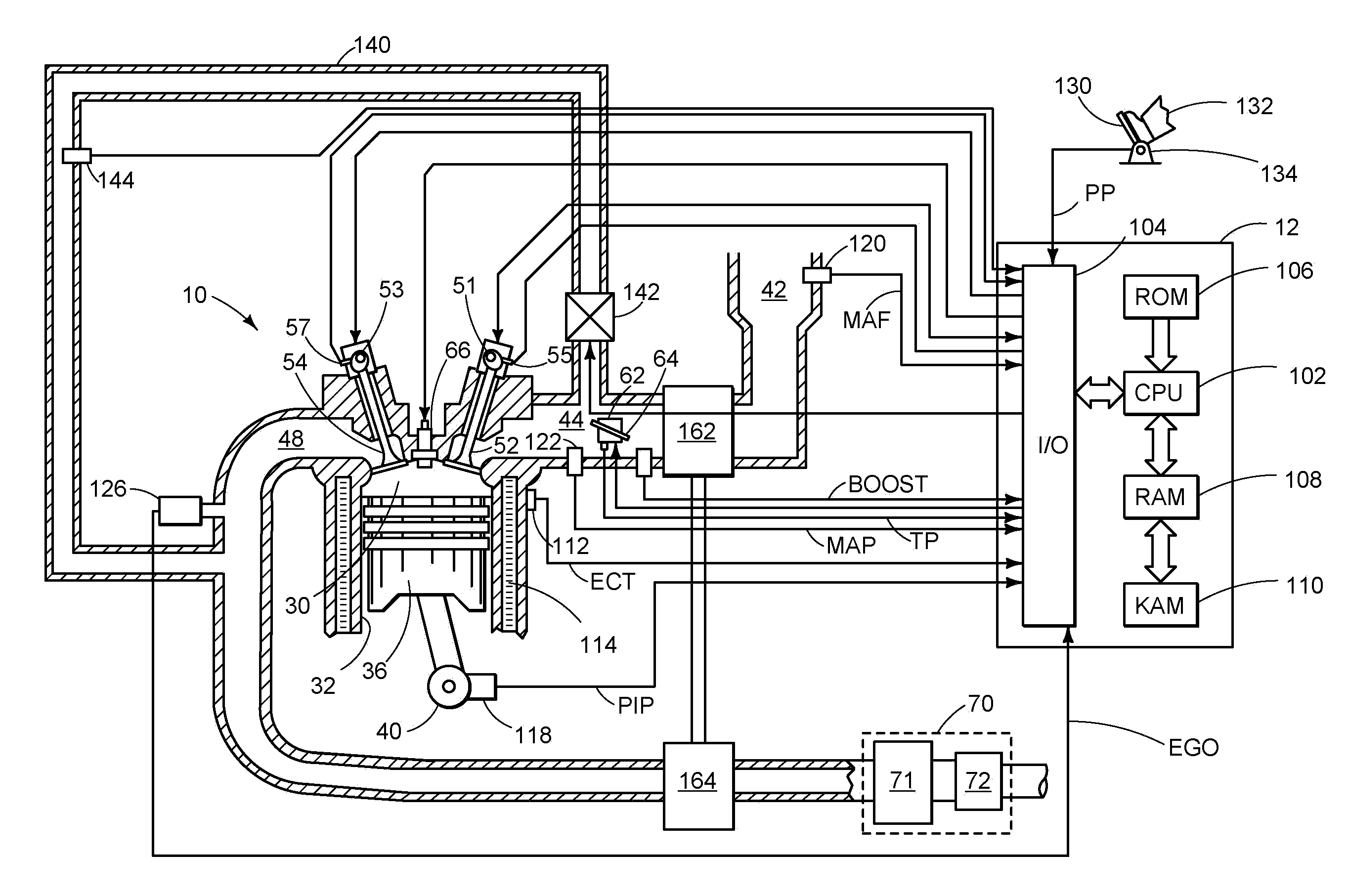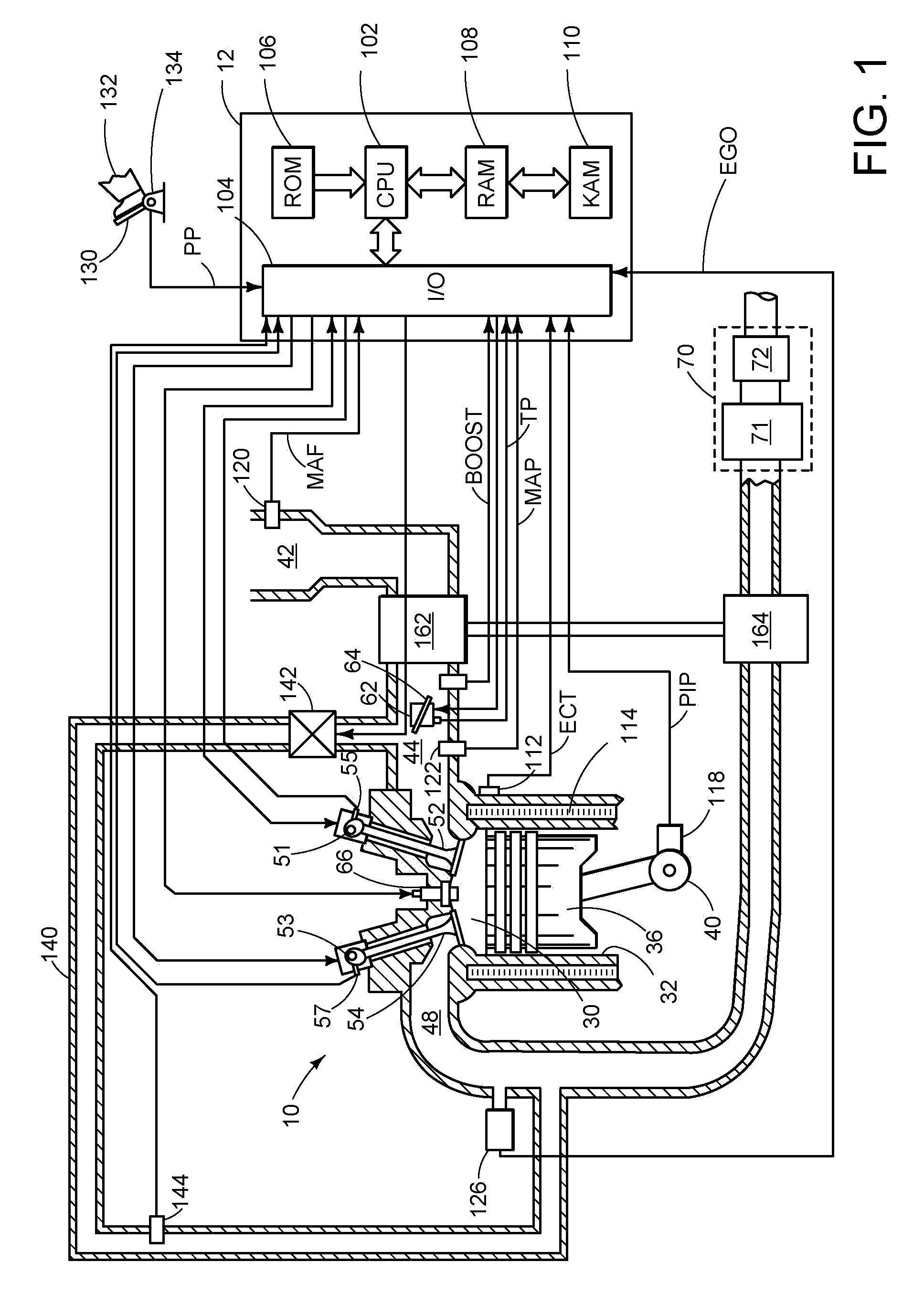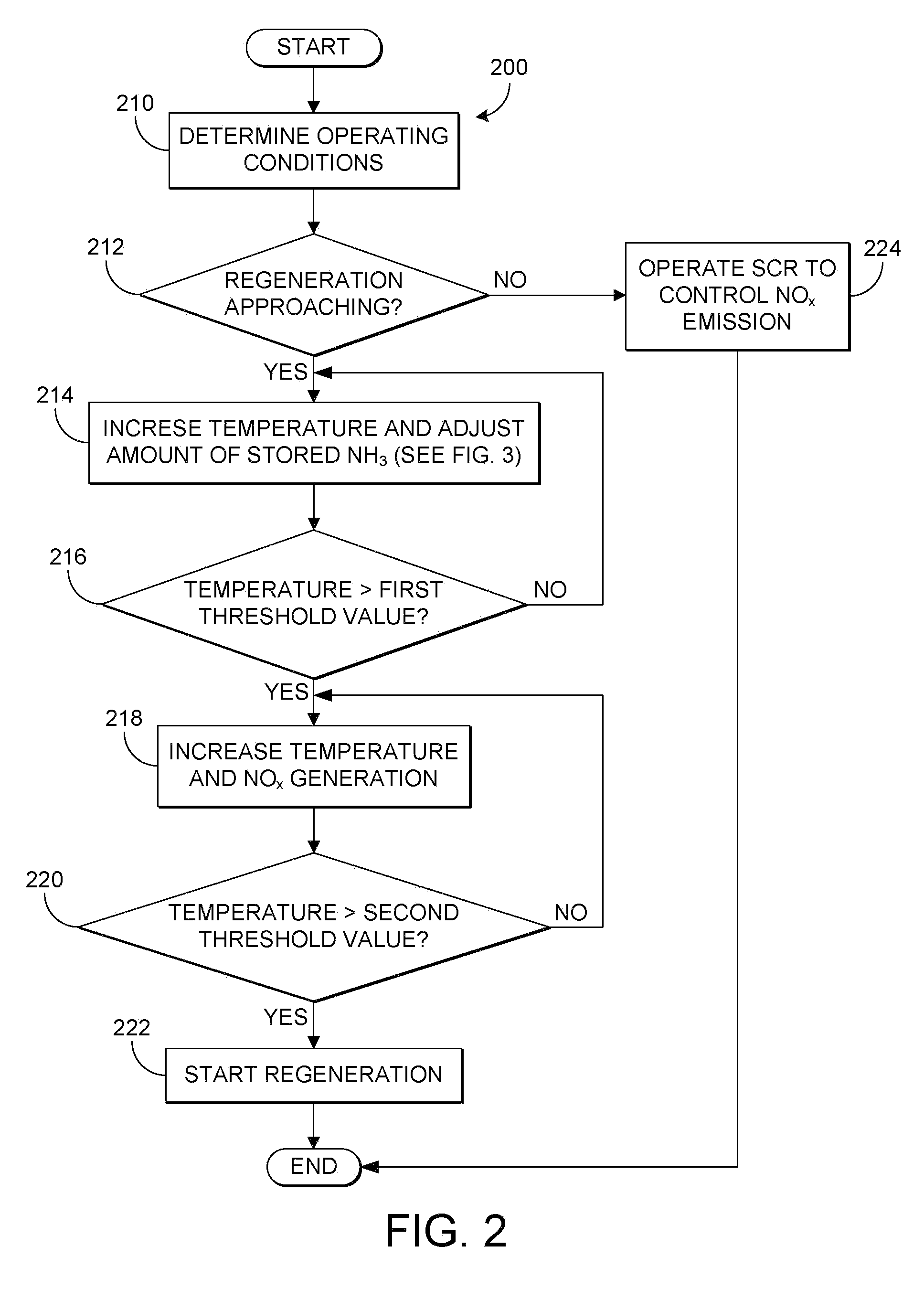Scr catalyst heating control
a technology of catalyst heating and catalyst, which is applied in the direction of electrical control, exhaust treatment electric control, separation process, etc., can solve the problems of ammonia slippage from the catalyst, increase of particulate emissions, etc., and achieve the effect of increasing the temperature of the scr catalyst and increasing the emission of nitrogen oxide (nox)
- Summary
- Abstract
- Description
- Claims
- Application Information
AI Technical Summary
Benefits of technology
Problems solved by technology
Method used
Image
Examples
Embodiment Construction
[0013]The following description relates to a method for controlling a diesel aftertreatment system which includes an SCR catalyst and a diesel particulate filter (DPF) coupled to an exhaust system in an engine of a motor vehicle. When an approaching thermal regeneration of the diesel particulate filter is detected, the catalyst enters a first of three phases in which the exhaust temperature is increased while urea injection to the catalyst is decreased and NOx conversion efficiency increases. Upon reaching a first threshold temperature, the catalyst enters a second phase where urea injection is cut-off and NOx emission from the engine is increased in order to quickly consume remaining ammonia that is stored in the catalyst. The temperature is further increased during the second phase in response to a decreasing amount of stored ammonia. During the third phase, once a desired amount of stored ammonia is reached and NOx conversion efficiency begins to decrease, regeneration of the DPF...
PUM
 Login to View More
Login to View More Abstract
Description
Claims
Application Information
 Login to View More
Login to View More - R&D
- Intellectual Property
- Life Sciences
- Materials
- Tech Scout
- Unparalleled Data Quality
- Higher Quality Content
- 60% Fewer Hallucinations
Browse by: Latest US Patents, China's latest patents, Technical Efficacy Thesaurus, Application Domain, Technology Topic, Popular Technical Reports.
© 2025 PatSnap. All rights reserved.Legal|Privacy policy|Modern Slavery Act Transparency Statement|Sitemap|About US| Contact US: help@patsnap.com



